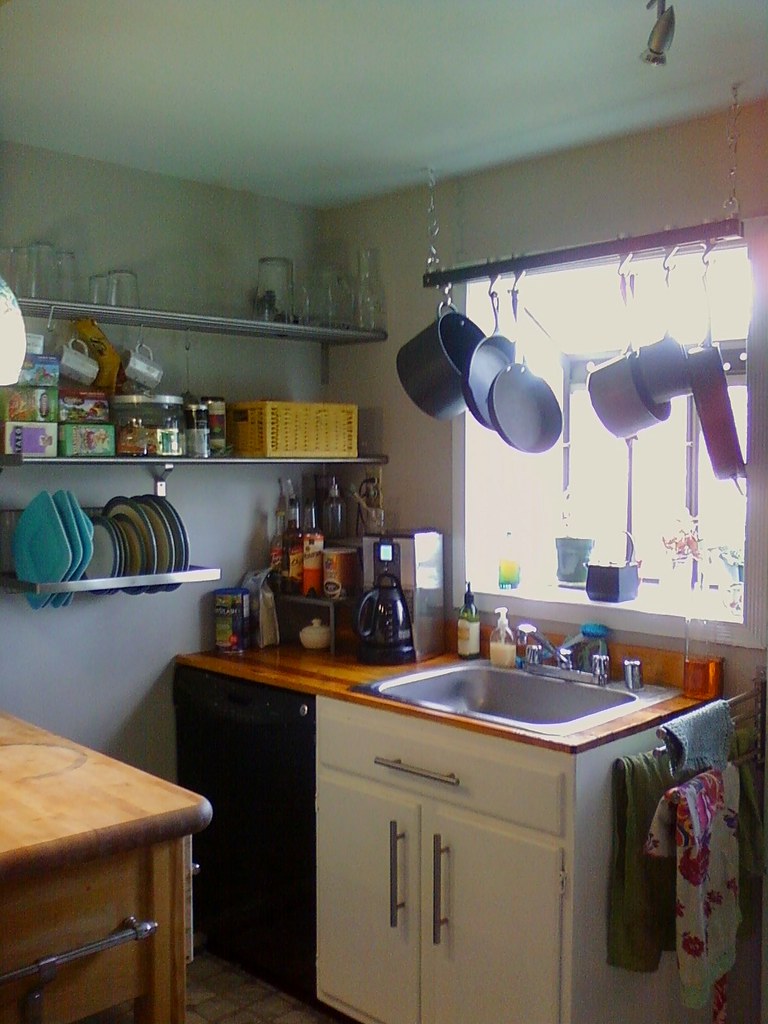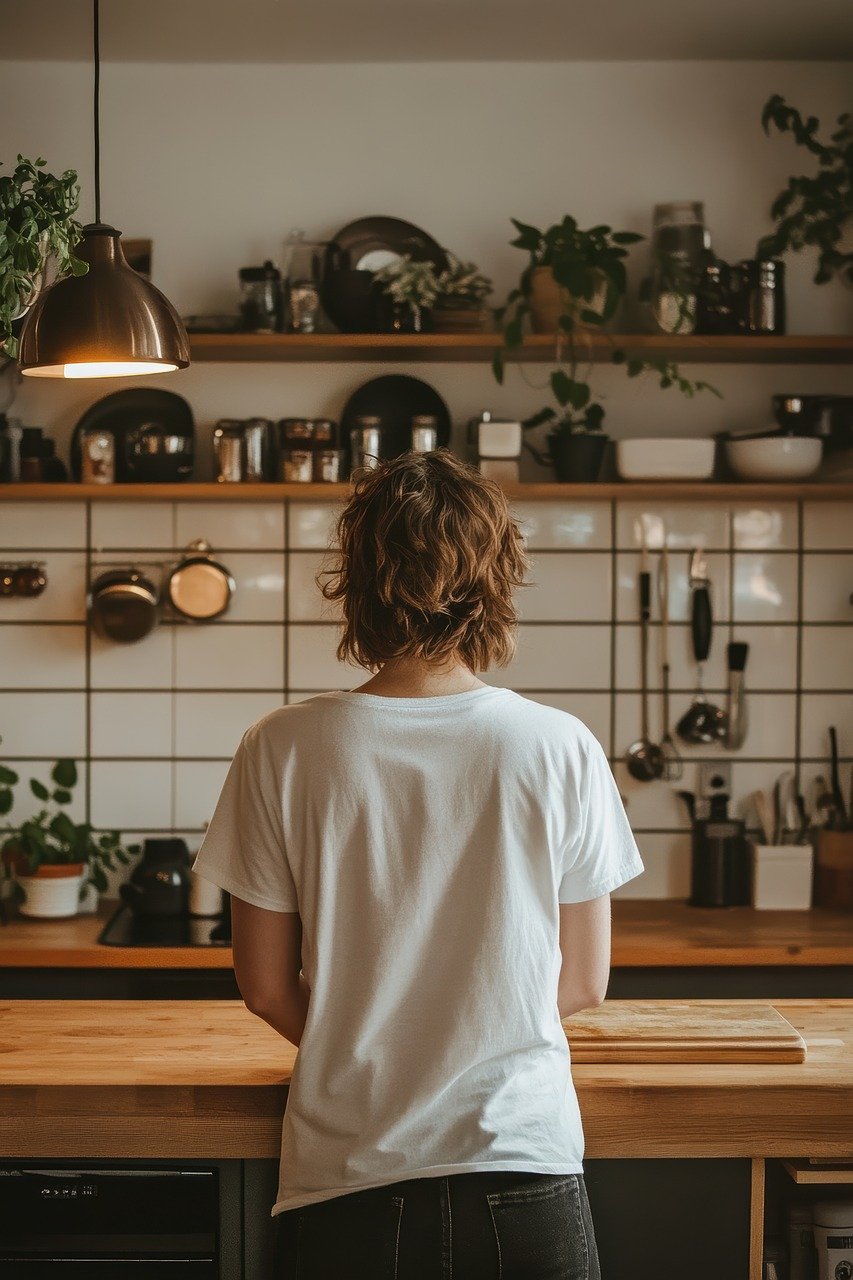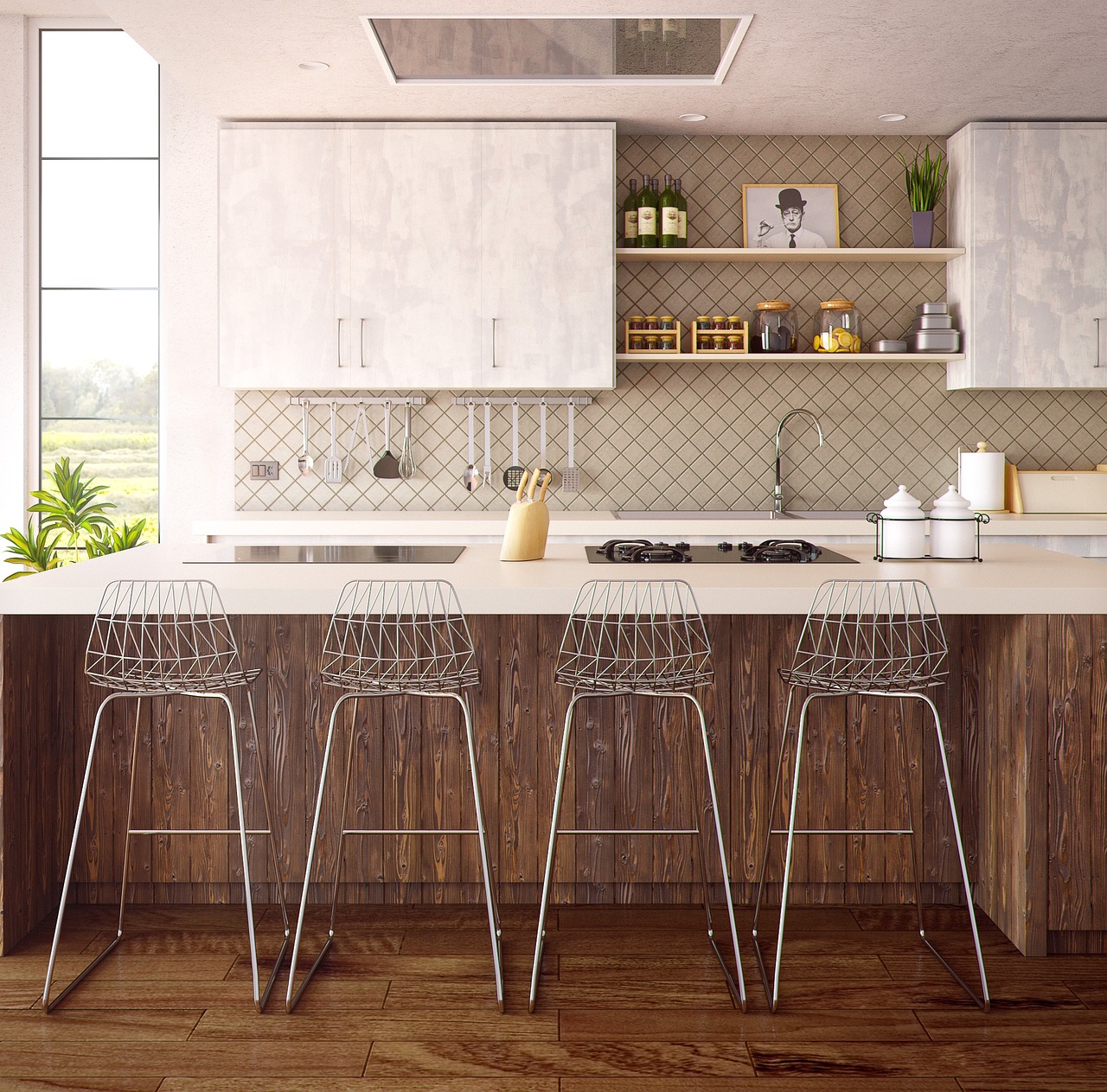The Pinterest Dream That’s Losing Its Shine
Remember when everyone was ripping out their upper cabinets and installing floating shelves? That trend dominated home design for nearly a decade, promising an airy, Instagram-worthy kitchen that would make your space feel bigger and more modern. But something interesting is happening in 2024 and 2025 – interior designers are quietly backing away from this once-beloved trend. The National Kitchen and Bath Association’s 2024 Design Trends Report shows a 23% decrease in requests for open shelving compared to 2022. What started as a fresh alternative to heavy cabinetry is now being questioned by homeowners who’ve lived with the reality of exposed dishes and constant dusting. The honeymoon phase with open shelves seems to be ending, and people are starting to admit what many have been thinking all along.
The Dust Collector Dilemma
Here’s what nobody talks about in those beautiful kitchen photos: dust settles on everything. According to a 2024 study by the American Cleaning Institute, open shelving requires 40% more cleaning time than traditional closed cabinets. Your beautiful white dishes that looked so pristine on Pinterest? They’re now covered in a thin layer of cooking grease and dust after just a few days. Professional organizer Marie Kondo, who once championed visible storage, recently acknowledged in a 2024 interview that “some things are better hidden for both cleanliness and peace of mind.” The reality is that most people don’t have the time or energy to constantly wipe down their dishes just because they’re on display. It’s like having a museum in your kitchen, except you’re the unpaid curator who has to dust everything weekly.
The Styling Pressure Is Real

Open shelves look amazing when styled by professionals, but maintaining that perfect aesthetic is exhausting for regular people. Interior designer Shea McGee noted in her 2024 blog that “clients are increasingly frustrated with the pressure to keep their everyday items looking magazine-ready.” You can’t just shove your mismatched tupperware and random kitchen gadgets onto open shelves – everything needs to be curated, color-coordinated, and perfectly arranged. A survey by Houzz in late 2024 found that 67% of homeowners with open shelving reported feeling stressed about keeping their kitchen looking “presentable” for unexpected guests. The mental load of constantly styling your shelves is becoming too much for busy families who just want to cook dinner without worrying about whether their dish arrangement looks Pinterest-worthy.
Storage Capacity Takes a Hit
Let’s talk numbers: traditional upper cabinets provide approximately 30-40% more storage space than open shelving systems. Kitchen designer Sarah Richardson revealed in a 2024 interview that many of her clients are requesting to reinstall upper cabinets after living with open shelves for several years. The problem is simple math – when you remove the enclosed storage, you lose precious space for all those kitchen items that aren’t photogenic but are absolutely necessary. Where do you put your food processor, blender, or that ugly-but-useful colander? The Remodeling Industry Association’s 2024 report shows that storage concerns are the primary reason 43% of homeowners regret choosing open shelving. You end up with cluttered countertops and overflowing pantries because there’s simply nowhere else to put your stuff.
The Grease and Grime Factor

Cooking creates more mess than people realize, and open shelves bear the brunt of it. A 2024 study by the Kitchen Ventilation Research Institute found that airborne grease particles can travel up to 8 feet from cooking surfaces, coating everything in their path. Your beautiful ceramic bowls on those floating shelves? They’re collecting microscopic grease residue every time you sauté onions or fry bacon. Professional cleaning services report that homes with open kitchen shelving require 25% more deep cleaning attention than those with closed cabinets. The romantic idea of displaying your dishes starts to lose its appeal when you realize you’re essentially storing your dinnerware in the path of cooking debris. It’s like keeping your clothes in the garage – technically possible, but not really practical.
Closed Cabinets Are Making a Comeback

The pendulum is swinging back toward closed storage, and designers are taking notice. Benjamin Moore’s 2025 color trends specifically highlight “hidden storage solutions” as a major design direction. Cabinet manufacturers like KraftMaid and Merillat report a 35% increase in upper cabinet sales in 2024 compared to the previous year. The new approach isn’t about going back to heavy, outdated cabinetry – it’s about smart, streamlined closed storage that still feels modern and clean. Designers are incorporating glass-front cabinets, integrated lighting, and sleek handles to create storage that protects your items while still looking contemporary. The message is clear: people want the benefits of hidden storage without sacrificing style.
The Resale Value Reality Check
Real estate agents are seeing a shift in buyer preferences that might surprise open-shelf enthusiasts. According to the National Association of Realtors’ 2024 market analysis, homes with traditional closed upper cabinets are selling 12% faster than those with open shelving. Buyers are increasingly viewing open shelves as a design risk rather than a selling point. Real estate photographer Jenny Siegfried noted in a 2024 industry report that staging homes with open shelves has become more challenging because they require constant maintenance to look appealing in photos. The trend that was supposed to increase your home’s appeal is now potentially hurting its marketability. It’s ironic that something designed to make kitchens look more spacious and valuable might actually be doing the opposite.
The Professional Chef Perspective
Interestingly, professional chefs have never been big fans of open shelving in working kitchens. Chef Thomas Keller mentioned in a 2024 culinary magazine interview that “a serious kitchen needs serious storage – and that means closed cabinets.” Commercial kitchens almost exclusively use closed storage for good reason: it protects equipment, maintains hygiene standards, and maximizes efficiency. James Beard Award winner Stephanie Izard told Food & Wine in 2024 that her home kitchen renovation specifically included upper cabinets because “I need my tools protected and organized, not on display.” When the people who cook for a living choose function over form, maybe it’s time for home cooks to reconsider too. The professionals understand that cooking is messy business, and your storage should reflect that reality.
The Clutter Psychology Problem

Psychologists are beginning to study the mental impact of visible storage, and the results are telling. Dr. UCLA’s Center for Everyday Lives and Families published research in 2024 showing that excessive visual stimuli from open storage can increase cortisol levels in some individuals. When everything is visible, your brain has to process more information, which can be mentally exhausting. Feng shui expert Marie Diamond noted in her 2024 wellness seminar that “hidden storage creates mental calm by reducing visual noise.” The minimalist aesthetic of open shelves might actually be creating more mental clutter, not less. It’s like trying to relax in a room where everything is demanding your visual attention – even your dishes are competing for mental space.
Smart Storage Solutions Are Winning
The future of kitchen storage isn’t about choosing between open or closed – it’s about smart solutions that combine the best of both worlds. Companies like Rev-A-Shelf and Hafele report record sales in 2024 for pull-out cabinet organizers and hidden storage accessories. The new trend is “concealed accessibility” – storage that’s hidden but still easy to reach and organize. Cabinet manufacturers are introducing soft-close doors, interior lighting, and custom organizational systems that make closed storage more functional than ever. Technology is solving the old problems of dark, hard-to-reach upper cabinets while maintaining the cleanliness and protection that closed storage provides. It’s storage that works as hard as you do, without requiring constant maintenance.
The Instagram Effect is Fading
Social media’s influence on home design is finally being questioned, and open shelving is feeling the impact. A 2024 study by the Digital Design Institute found that 58% of homeowners now prioritize functionality over “Instagrammability” when making renovation decisions. Influencer culture promoted the idea that our homes should always be camera-ready, but people are getting tired of living in a constant state of performance. Home design blogger Jenny Komenda wrote in 2024 that “we’re entering an era of authentic living where your home works for you, not for social media.” The pressure to create the perfect shelfie is being replaced by the desire for spaces that actually function well for daily life. Maybe it’s time to design for real life instead of the gram.
What the Future Holds
As we move through 2025, the home design world is embracing what experts call “practical luxury” – spaces that look beautiful but work even better. The open shelf trend served its purpose by breaking us free from heavy, dated cabinetry, but it’s time for the next evolution. Designers predict that the future belongs to streamlined closed storage with smart organizational features and clean, modern aesthetics. The goal isn’t to go backward but to move forward with lessons learned from the open shelf experiment. After all, the best design trends are those that improve our daily lives, not just our Instagram feeds. Did you really think exposed dishes covered in cooking grease were the final answer to kitchen storage?

Renowned for her warm and inviting aesthetic, Joanna Gainsley has revolutionized modern farmhouse design. In The Cozy Home Guide, she shares practical tips on how to make any space feel like a sanctuary.
